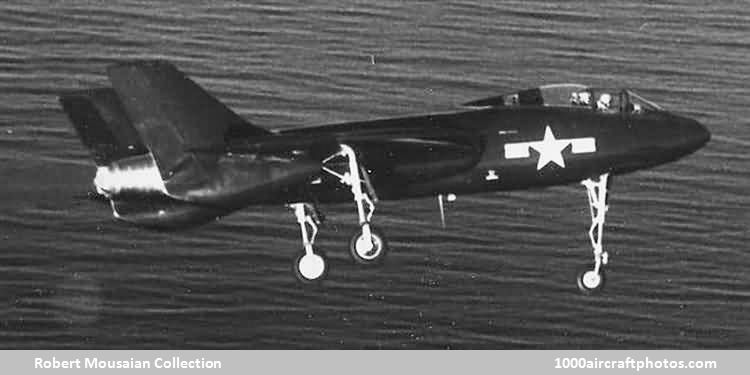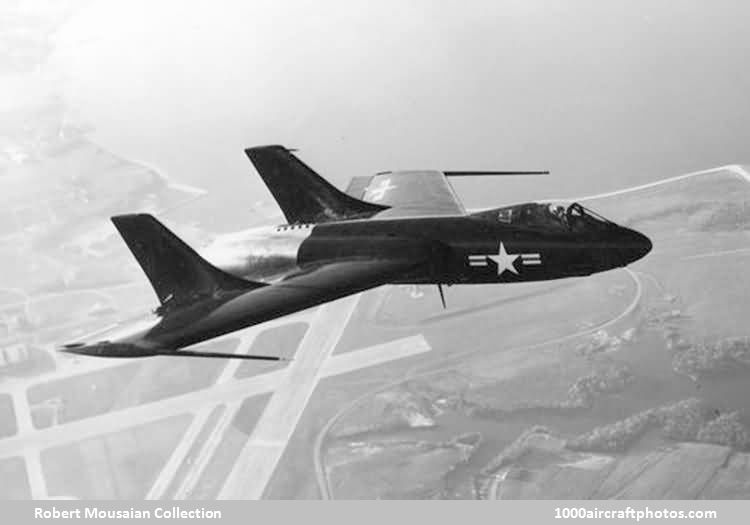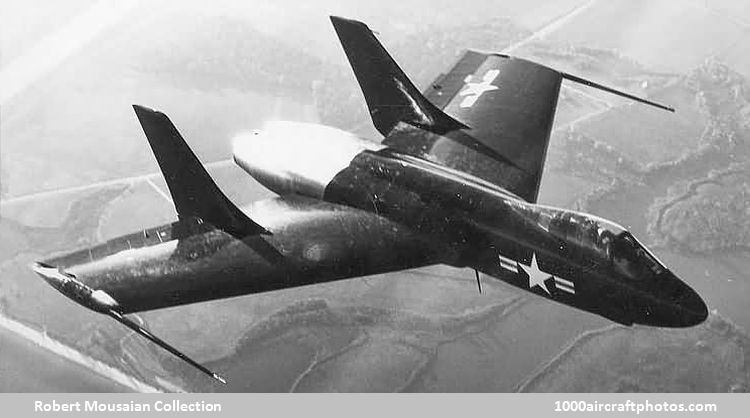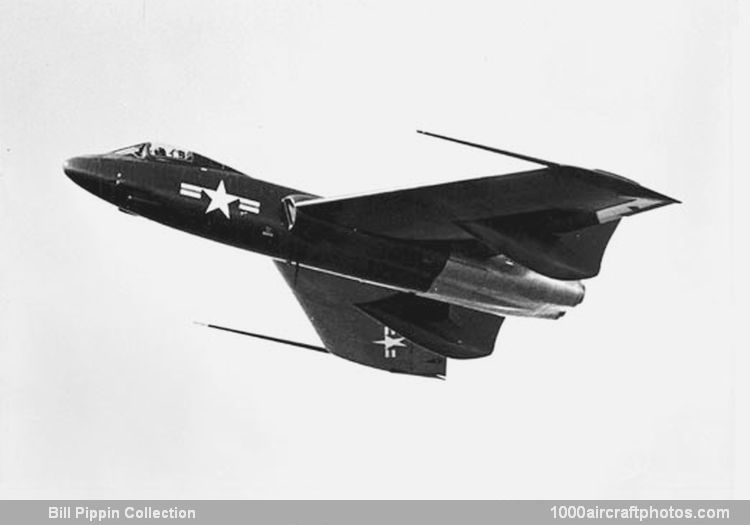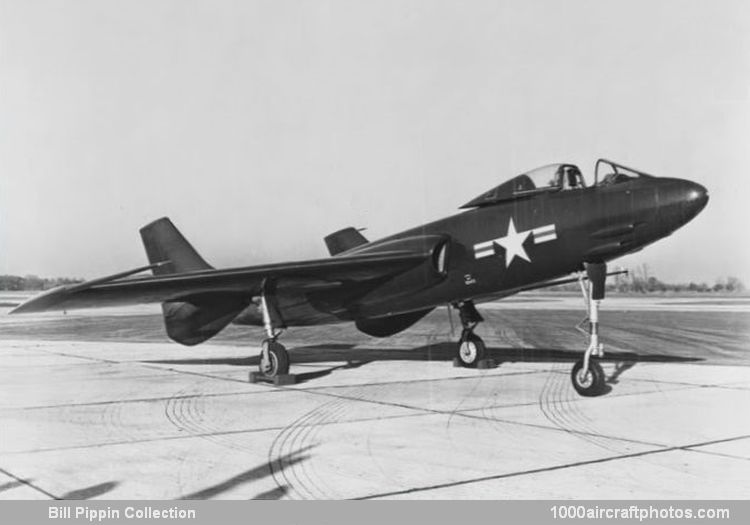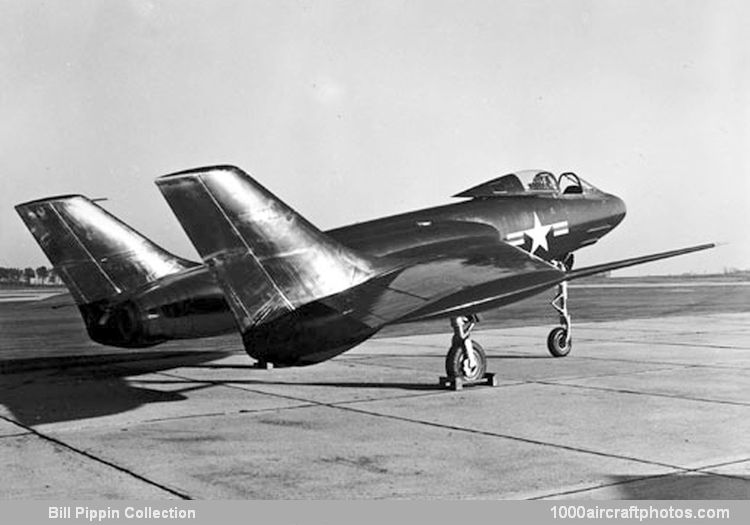01/31/2017. Remarks by
Johan Visschedijk: "Winning submission in a USN competition launched on June 1, 1945 for a single-seat shipboard fighter capable of achieving 600 mph (966 kmh) at 40,000 ft (12,190 m), the Vought V-346 was highly unconventional.
Powered by two Westinghouse J34-WE-22 engines each rated at 3,000 lb (1,361 kg) st and 4,250 lb (1,928 kg) st with afterburning, the first XF7U-1 flew on September 29, 1948. In December 1948 the aircraft was assigned to
NACA Langley Research Center, Langley AFB, Hampton, Virginia, 122472 was lost on September 28, 1949 after all control was lost during take off at Vought's temporary flight test facility at Ardmore AFB, Oklahoma. Vought test pilot Paul Thayer escaped serious injuries.
(
Bill Pipin Collection)
The second XF7U-1 (BuNo. 122473) flew only a few months later, during a test flight it crashed into Chesapeake Bay, Maryland on March 15, 1949, the pilot, William Millar was killed. Flown by Paul Thayer the third XF7U-1 (BuNo. 122474) suffered an engine explosion an air display at
NAS Patuxent River, Maryland, on July 7, 1950. Thayer ejected safely but sustained a spinal injury, the aircraft impacted on an island in the Patuxent River."
